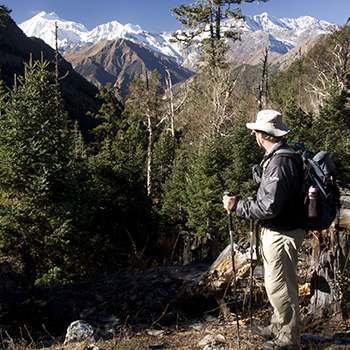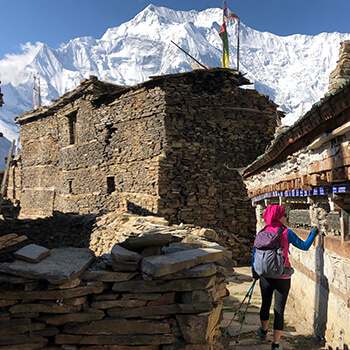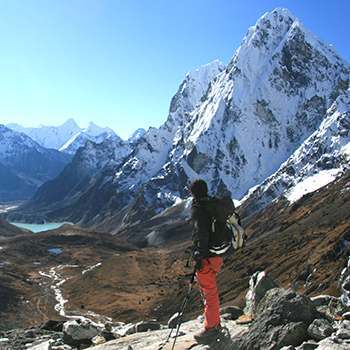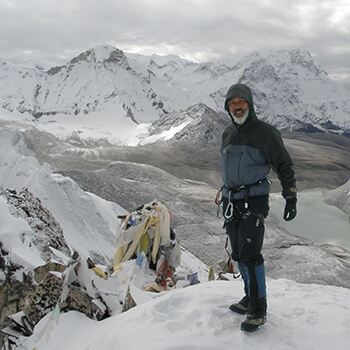Trekking Companies
How to choose from so many trekking companies? Want to find the right one who really follows the principles of sustainable tourism? And then, how best to communicate and negotiate with them to get a fair and reasonable price?
At the end of the day, responsible trekking companies and trekking is what the Himalaya needs more than anything else. We’re here to help you find companies who are actually doing the right thing.
We want to help promote genuinely accredited Sustainable Tourism professionals. So, this website will only recommend those who have accomplished, or are on the path to accomplishing, international certification. Currently, the only active certifying body for tour agents in the Himalaya is an organisation called Travelife (www.travelife.info). They are base in The Netherlands and you can learn more about them if you are interested either as a trekker or outfitter – a full list of accredited and partner organisations is available by clicking here and select your country of interest.
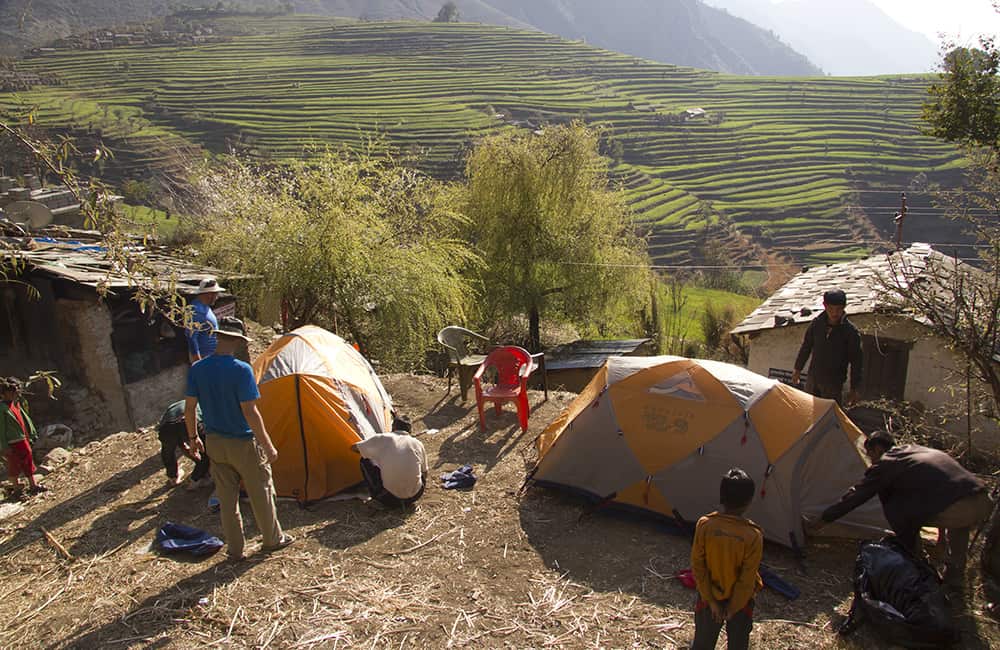
The quality of your trek is likely to depend a great deal on the quality of the trekking outfitter (agent) that you choose to use.
Not sure about the credentials and capacity of trekking companies? Please reach out and Get in Touch as we have nearly 30 years of working with many companies and are happy to share our thoughts.
Trekking Companies, Guide and Crew
Trekking with a guide and a crew is a wonderful opportunity to develop a better understanding of Nepal. After researching the multitude of trekking companies, you’ll find the ideal partner. It’s then time to build relationships with your crew who will possibly change your perspective on your own life. So, if you have the opportunity to select your own guide it is worth spending a little time to make the right choice. Once you’ve found your ideal guide they will take responsibility for the choice of crew, but you can have input as well. If you are on a fully organised trek and the guide is already chosen for you there are issues and ideas that you should be aware of, so please take the time to read this section.
Finding a guide can be difficult in peak season, but if you arrive before the rush of groups in mid October or April (see When to Trek) you should be able to find a good candidate in a couple of days. A good start is to ask returning trekkers, or some local trekking agencies if they know any guides with knowledge of a specific area or issue and the ‘grapevine’ will do the rest.
Use Open Questions
Guides sometimes present their trekking or climbing history in a scrapbook or simple resumé, and it is important to ask for, and then check, references from the outset. Perhaps choose a modest local teashop as a place to meet for a snack or lunch as a ‘get-to-know-you’ session. Try only to ask open questions as most Nepalese will almost certainly answer ‘yes’ rather than lose face. It is surprising how many ‘guides’ will assert knowledge of places they have heard about second or third hand. So your first question could be, ‘What is it like in … ?’ If they have been there before, how many times, how long ago, and have they been the senior member or guide of the group each time? Perhaps your guide’s home village is in or near the region you wish to trek, if so can you take the time to visit their home? Such opportunities are a great way to really get to know what life is like in rural Nepal.
Top tip
When researching treks or contacting trekking companies by email remember to use open questions, itemise questions and try to use the simplest possible language.
Relevant Experience is Essential
Your guide’s general experience is also important. A long history of leading groups to different regions proves a deep level of competence. Having taken ‘a few groups teahouse trekking in the Everest region’ should not inspire confidence. There are a few formal technical mountaineering and climbing courses run by the Nepal Mountaineering Association, which are world class in standard, and qualifications are evidence of genuine skill and ability. However, you should be cautious of the Trekking Agency Guide Identity Card for which very little training or few qualifications are necessary.
How Much to Pay?
Rates of pay for guides vary depending on experience, level of responsibility, trek difficulties and demands. You may not get to negotiate with many guides as they will insist on using a particular agency to organise your trip. This has become common since the introduction of TIMS (Trekkers Information Management System) and porter insurance. KEEP (Kathmandu Environmental Education Project), IPPG (International Porter Protection Group) and the Nepali government all have recommended minimum wages and conditions for guides and crew. By trekking with a crew you are undertaking to look after the welfare of your staff, so also ask your trekking company, IPPG and KEEP about your responsibilities towards your crew. You should also develop a clear idea of which jobs and responsibilities belong to you, and those your guide will handle.
Check out our comprehensive review of all trek costs – see How Much Do Treks Cost – and make sure you are negotiating a fair price and not paying too much!
Communication Skills
Some guides can speak multiple languages and dialects from Nepal (there are more than eighteen ethnic groups each with a distinct language), which can make bargaining and trail finding much easier. You should also test the first-aid knowledge of your guide; many have only a very basic idea. After you have asked all your questions and developed a good idea of how well you get along together, you can discuss plans for the trek.
Perhaps the most common problem trekkers suffer from is the Nepali propensity to answer questions with a ‘yes’. As well as using open questions, also make sure the person is qualified to answer your questions. It’s amazing how often you hear trekkers asking how long it takes to walk somewhere and being answered by a local who doesn’t own a watch and has a completely different concept of time!
Deciding Responsibilities
Before you start buying food, booking tickets and employing staff you need to get the rules of the trek agreed. Some common issues you should be completely clear about:
- How do you organise a rescue? Is the trekking agency going to organise a helicopter if needed? You might need to obtain details of a rescue organisation before you depart. Leave a copy of everyone’s insurance details with the agency.
- Who decides on rest days? Is your itinerary rigid or could you take an extra day here or there to rest and explore a place?
- If there is an injury, who treats the patient? The crew are considered your responsibility as well as that of the guide and agency.
- Does anyone in the group have any special dietary needs?
- Is anyone in the group on medication? Are there any other pre-existing medical conditions that the guide or agency should know about?
- If equipment is damaged or lost who pays for the repair or replacement?
- Will you be happy if the crew drink alcohol or smoke in camp? If you have a little party or celebration, who is paying for the drinks?
Check out Rescue and Emergency for more details.
Cooks, Kitchen Crew and Porters
Once you have a clear understanding about the roles of the agency, guide and your own responsibilities it is time to select a cook, sherpa assistants if necessary, kitchen crew and porters. Normally your agency and guide handle all the recruiting and planning, but you can be involved too.
Cooks vary greatly in skill
From almost as bad as the extremely comical Pong described in WE Bowman’s The Ascent of Rumdoodle, to five-star hotel-trained cooks who produce seven- to eight-course gourmet meals. Your guide should be able to find a cook who can cater for your tastes; if you have special dietary requirements don’t be afraid to ask for a sample meal to check their skills. Your cook will normally select the kitchen crew, who tend to be staff they have worked with in the past. The kitchen crew may also lend a hand when pitching tents or dismantling camp if necessary. Porters carry the heaviest loads, normally 25-30kg, but sometimes they might elect to carry a double load up to 60kg for short periods. You should not encourage double loads. Local authorities often check porter loads. You will have trouble continuing your trek if the loads are considerably over 30kg and/or your staff are too young. As the majority of staff on any trek or expedition are porters, it is important to take some time in their selection.
Sherpas
The Sherpa people of the Solu-Khumbu (the Everest Region) have developed a reputation for enormous energy and skill at assisting Himalayan climbers. In recognition of this senior role, ‘sherpa’ has come to mean someone who helps clients along the trail. They also scout ahead to find the safest route, and prepare and dismantles camp on a daily basis. Many groups employ at least one or two sherpas. They often go ahead and book teahouse rooms for the night, lend a helping hand on tricky sections of trail, and they may serve your meals to help out the teahouse owners.
Be Sensitive to Cultural Differences
Although the Nepalese are very socially and religiously tolerant, different castes may chose to prepare and eat meals separately. Ideally, you shouldn’t have just one or two porters from a different caste as this may make meal times hard work for them. There are several theories about the selection of Hindu versus Buddhist staff but none is reliable. The bottom line is, you can always get a bad apple in a group but the chances are small.
Encouraging your crew to have a small party after a day on the trail is an excellent idea for a number of reasons. Perhaps share a communal bowl of chang (a locally made beer throughout Nepal). It is the best way to break the ice and get to know your crew. By making the effort to share a little social time you will find your crew willing to share stories and relax. Nepalese love a party and it will help to bond the crew together. You will notice that the whole crew will start to work as a team. Some low-impact dancing will help to flush lactic acid from tired muscles, thus make the walking easier tomorrow.
Planning Timer is OVER! Time to hit the ground!
So you’ve planned and planned, you’re hyped and ready to go. Now let’s have a look at the next steps to go through before you finally hit the trail and immerse yourself in the GHT!





